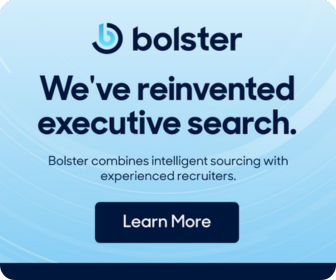
This is a guest post written by Dana Warren, Venture Partner at Canaan Partners, the early-stage VC that invests in entrepreneurs with visionary ideas. Dana is also a CEO advisor and marketing and revenue expert who has worked at Stripe, PayPal, and American Express.
Strategic business partnerships can be transformational—but how do you go about building successful partnerships?
I make it a habit to consume business content in all forms. I find a ton of value in listening to great people live and on podcasts, attending webinars and events, and of course, reading, reading, reading.
Most of what I’ve learned about business partnerships, though, I’ve learned in the trenches.
There’s not as much content out there about partnerships as there is about other business topics. Now that I’m working with the CEOs, founders, and leaders of tech startups and scaleups, I find myself sharing my own experiences and the knowledge of partnerships I’ve gained over the past 15 or so years at Stripe, PayPal, and American Express.
What is a strategic partnership?
In a strategic partnership, parties commit to co-mingling economic futures, often over a multi-year horizon. They often co-develop roadmaps (there should be the intent to lift and shift those features/products for other future partners or direct customers), and drive distribution for one or the other (or both!). There is potential for proprietary technology for the partner at some superior margin or bottom-of-the-barrel cost to acquire and serve.
The long-time Delta-American Express partnership is a great example. Throughout their partnership, these two corporations have innovated continuously, distributed on one another’s behalf, and enabled superior acquisition through unique customer value that delivers tremendous value to their bottom lines.
What a strategic partnership is not:
Reselling deals are not partnerships. The old “go slow to go fast” advice is critical here. Resale deals can start out looking like partnerships, so it’s important to take the time to determine which situation you’re dealing with.
If the two parties are only distributing products on behalf of one another, it’s a resale deal. If they’re doing business development together, that’s a partnership. Re-sale comes with varying degrees of margin compression in exchange for volume and/or lower CaC.
Neither option is inherently better than the other, but they achieve different goals. (More on that below!) Since the two strategies are easily confused, knowing which path you’re headed down is important
What’s the goal of a partnership?
Partners can help drive growth, offer access to new customers, and more. Since there are a variety of reasons why you might enter into a business partnership, it’s important to define your goals. This sounds simple, but it’s often overlooked.
A few common goals in a strategic partnership include:
Expanding market share
Parties may access new markets by leveraging one another’s current customer and brand positioning.
Increasing revenue and profitability
Parties may expand sales in the highest ROI customer segments, reduce costs to acquire customers, and access one another’s systems to derive increased operational efficiencies.
Enhancing product roadmap with increased innovation
The partnership facilitates access to people, technology, and data that inform new product and feature enhancements and create competitive differentiation, customer demand, and improved retention.
Enabling increased brand awareness
Parties may tap into one another’s current brand positioning and value to unlock awareness in new segments.
Being very clear about what you expect to give and receive as a part of the relationship will help you measure success. Extra credit if you share your top goals with your potential partner to ensure your goals are aligned and/or complementary.
How do you find a good partner?
Just like with customers, a partnership is all about finding the right fit. It’s important to acknowledge that there are great, good, mediocre, and even “fire-able” partners.
In an ideal world, you’d know which category your potential partner falls into before making a deal with them. There are a few questions you can ask to help you determine whether a partnership is a good fit.
- Do they have existing productive partnerships? Desk research should produce helpful insights here to find companies’ sales and marketing activities and marketplace responses to their partnership.
- Do their current partners recommend them? Asking for references and doing thorough due diligence—like with hiring—not only helps determine the best fit but also helps inform how to work with one another on day one.
- Do they have a process (i.e. people, organizations, systems) to manage the partnership? Inquiring about playbooks, protocols, or teams dedicated to the partnership should provide insights into their process if they have one.
- Is everyone—on both sides—on the same page about the goal and owner of the partnership? Sharing the goals and framework upfront, before the deal is signed, and proposing a monthly or quarterly scorecard review, will help you succeed and secure the renewal.
Getting ruthless about prioritizing good partners pays off fast. You’ll see a boost in commercial outcomes, costs to serve, and team morale when you work with the right people and organizations.
How will you measure success?
From the start of your partnership, it’s important to align on KPIs. Both parties should answer the question: “What about this partnership will make you a hero at your company?” Being so upfront can be uncomfortable, but it’s a proven approach to getting aligned quickly and creating an effective strategy. It ensures no one’s time is wasted.
KPIs vary greatly by partnership and industry but often include sales, economic, customer satisfaction, and product-related metrics. Here, Salesforce serves up an excellent example of a company that enters successfully into strategic partnerships and not only delivers value to joint customers but aligns on goals and KPIs. Their multi-year partnership with Amazon, which continues to expand, is one longer-standing demonstration, while their newer partnerships with Anthropic and OpenAI offer promising examples as well.
Want bonus points? After the deal is signed, do a retro with both parties. This is a tip I learned from a sales leader I worked with at Stripe, and it's the #1 trick for delivering on a successful partnership. It clarifies whether there’s as much alignment as you all think, if the goals are what you understood them to be, and whether there are bruises that need first-aid attention as you shift to launch, results, and expansion. It also sets the stage for a shared scorecard, QBRs, and an open approach to the partnership.
Once the partnership begins, share metrics early and often to ensure everything is on track. If things aren’t on track (they won’t always be!), determine how you’re going to address the challenge together.
Hiring partnership talent
Finding, hiring, and growing partnership talent is a complex topic, but hiring teams should keep a few key things in mind.
To sell is not to partner. Top sellers do not often make solid partnership leads, nor do top partnership leads always excel in sales. Don’t treat the two functions as though they’re interchangeable—they’re not.
Partnerships are cross-functional. When you’re hiring for partnerships, the best candidates should have a track record of—and be enthusiastic about—working cross-functionally, understanding complex financial strategies, and going deep on product roadmaps. They should be able to build lofty multi-year strategies and execute in the details.
The best partnership leaders are excited about partners. Sometimes, it’s as simple as asking, “Do you want to spend as much—or more—of your day with your partners as you do with your internal colleagues?”
Final thoughts
There are plenty of moving parts that go into building successful partnerships. It takes preparation, tenacity, and organization, but when business partnerships are done right, the results can be pivotal for your business. They can unlock long-blocked customer segments, supercharge marketing efforts, and provide the fuel needed to fire up your roadmap in new, differentiated, and valued ways.
Dana Warren is currently a venture partner at Canaan Partners and brings 15 years of experience building and running revenue, marketing, and strategy teams at American Express, PayPal, and Stripe. Most recently, at Stripe, Dana helped build and grow global strategic partnerships with leading SaaS & B2B platforms including Shopify, Salesforce, Mindbody, Squarespace, and XERO. She’s also a board member and advises early-stage tech CEOs and founders on operations and growth.
Dana holds a BA from Princeton University and an MBA from Columbia Business School, where she graduated with honors. Dana lives in Westchester NY, with her husband and their three children.
